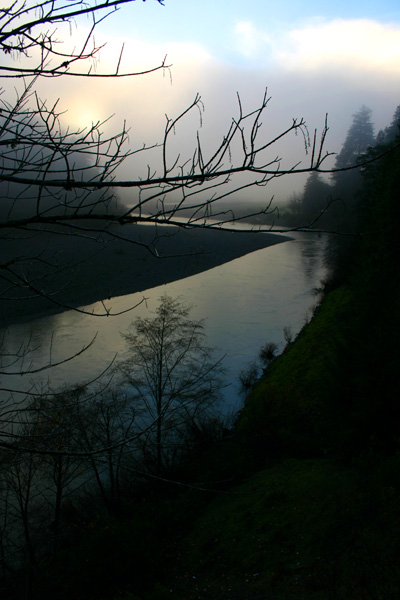Park Information
Weather
Summer 75–95° F. Morning and evening fog is common. Winter 30–50° F. Be prepared for rain.
Rules & Notifications
- No diving or jumping into the river.

- No lifeguards are on duty. Children should be supervised at all times.
- Fires are permitted only in fireplaces provided. No ground fires are allowed.
- All park features are protected by law and must not be disturbed in any way.
- Do not leave crumbs and food scraps or feed wild animals.
- Pets must be on a leash no longer than six feet during the day and kept in your vehicle or tent at night.
- Except for service animals, pets are not allowed on hiking trails.
- Bicycles are allowed only on paved roadways.
Plants
Richardson Grove’s old-growth redwood forest thrives in the area’s alluvial soils and mild climate. Many trees in the grove are more than 1,000 years old; several are more than 300 feet tall. Strolling among these towering giants is an unforgettable experience. One can see some of the world’s tallest coast redwoods, a walk-through tree, and the fallen tree growth-ring exhibit that has drawn visitors to the park since 1933.
Redwood sorrel, ferns, and mosses take advantage of the deep shade in the heart of the forest. Younger redwoods, Douglas-fir, California laurel, oaks, and madrones compete for sunlight and moisture outside the established groves. Undergrowth includes huckleberry, hazel, Douglas iris, calypso orchids, poison oak, and redwood violets.
Wildlife
The South Fork of the Eel River (named for an eel-like creature called the Pacific lamprey) runs through the park. During fall and winter, spawning salmon and steelhead return to the river. Wildlife includes black-tailed deer, gray foxes, and river otters. Occasional visitors include bears and mountain lions.
Native birds include bald eagles, great blue herons, osprey, belted kingfishers, California quail, and acorn and pileated woodpeckers. Endangered marbled murrelet chicks and eggs can fall prey to ravens, crows, and jays if food scraps dropped by visitors attract these corvids.
Be sure to ask park staff about the “bat tree” where Yuma myotis roost. These little brown bats are welcome residents that help to reduce the mosquito population.
Keep it Crumb Clean
Visitors are required to watch this short video about the impact human food has on park wildlife.
Climate Change
Scientists studying the effects of rising global temperatures have found that the size and longevity of redwoods helps them store more climate-altering carbon dioxide than other plants. Even old redwoods continue to grow, each year adding more carbon-filled wood than smaller, younger trees. After redwoods die, their rot-resistant wood holds onto that carbon for a long time.
Research in the Park
To find out more about scientific research in California's redwood parks, go to this Save the Redwood League site.
Park History
The first known inhabitants of this region, the Sinkyone people, hunted, fished, gathered food, and lived sustainably among Richardson Grove’s ancient redwoods, which they considered sacred. These Athabascan-speaking people trained their dogs to drive game toward waiting hunters. Both men and women were basket makers. Today’s Sinkyone descendants maintain cultural and spiritual ties to the Grove.
The first recorded settler in the area, Kentuckian Ruben Reed, bought land on the South Fork of Eel River in the late 1860s. His brother and their widowed father homesteaded 160 acres, now part of the park. In the early 1900s Henry Devoy bought Reed’s land; Devoy leased the redwood grove in 1920 to Edwin Freeman, who built a store, a dining room, and cabins at the site of today’s visitor center.
In 1922, Save the Redwoods League, concerned about the potential destruction of the trees by highway construction and logging, persuaded the state to acquire 120 acres of the redwood grove. Between 1922 and 1932, Freeman operated the new park as a concession and lobbied to name the park for Governor Friend W. Richardson. The Richardson Grove Lodge, which is now the visitor center, was built between 1928 and 1930. In 1933, the Civilian Conservation Corps (CCC) began building campgrounds, picnic facilities, trails, water systems, and restrooms in the main grove.
Periodic flooding of the Eel River, particularly during the floods of 1955 and 1964, damaged the CCC-built facilities. In February 1986, the river again overflowed its banks, destroying the campfire center and picnic area. Later, new facilities were built outside of the main grove. Today, only the visitor center remains in the main grove, lessening the human impact on its fragile ecosystem.
